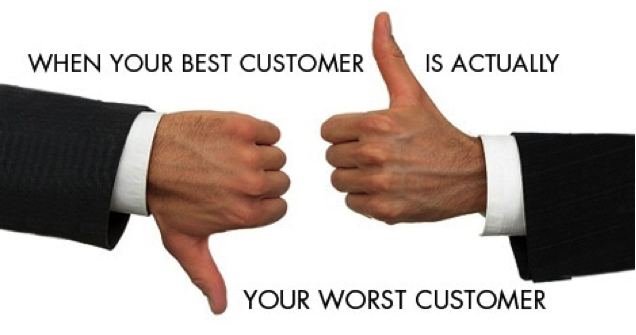Are they your best customer or worst customer?
You know who I’m talking about. That one customer who is seen as the most important and precious to the company, who everyone treats with kid’s gloves. Yet this customer seemingly pays later than all the others, demands special terms, takes up a great deal of the manager and staff’s time and never seems satisfied?
When I ask business owners about why it is that one customer can seem to dominate their company, the reply is often along the lines of, “they’re our longest-serving customer” or, “they’re our biggest customer” or even “they’re a personal friend of the owner”.
In this situation, it’s useful to ask: is this customer adding to the long-term growth and well-being of the firm or, actually detracting from it? This situation is particularly acute when that one customer’s business represents greater than 40% of the overall revenue. This benchmark indicates that the customer has too much influence, and in effect, it runs the business, not the owner.
For a small to medium enterprise, accepting those large orders seem critical to growth, but at the same time betting the business growth on the back of one customer places the businesses into a very dangerous position. I’ve both been in a business where this has been the case and worked with clients in this position. The key point to watch out for is that if this large customer starts to dictate how your business operates, what markets it is in, what products it offers and then, on top of that, chronically pays late, then the business owner can get into real trouble.
How to get out of this? In the short-term, work on educating the customer about the terms of business you want to have with them. Easier said than done you may say, yet when explaining what you want, what your business needs in order to continue being a stable supplier for them, and why the modifications to your existing arrangements are necessary for the relationship to remain valuable for both of you, often will produce the change you’re looking for.
In the long-term, work towards expanding your customer base and even, towards firing that one customer if desired or necessary for you to meet your long-term goals for the business. Again if a customer doesn’t pay on time, or exerts too much control over your business, no matter what their size, are they really a customer you want? And how much time could be freed up to handle those that do pay with better margins? Remembering to work this plan in alternative customer sources and cutting of ties when the time is right for you.
In ActionCOACH we call this getting rid of ‘D’ Class customers (we grade all customers A to D). Get rid of your “D”s, so that you have more time to cultivate your “A”s. Go over your whole customer list. Does your ‘best’ customer upon inspection really live up to this premise – or if you had a choice, you’d rather not to have taken the order and would prefer to have other customers?

